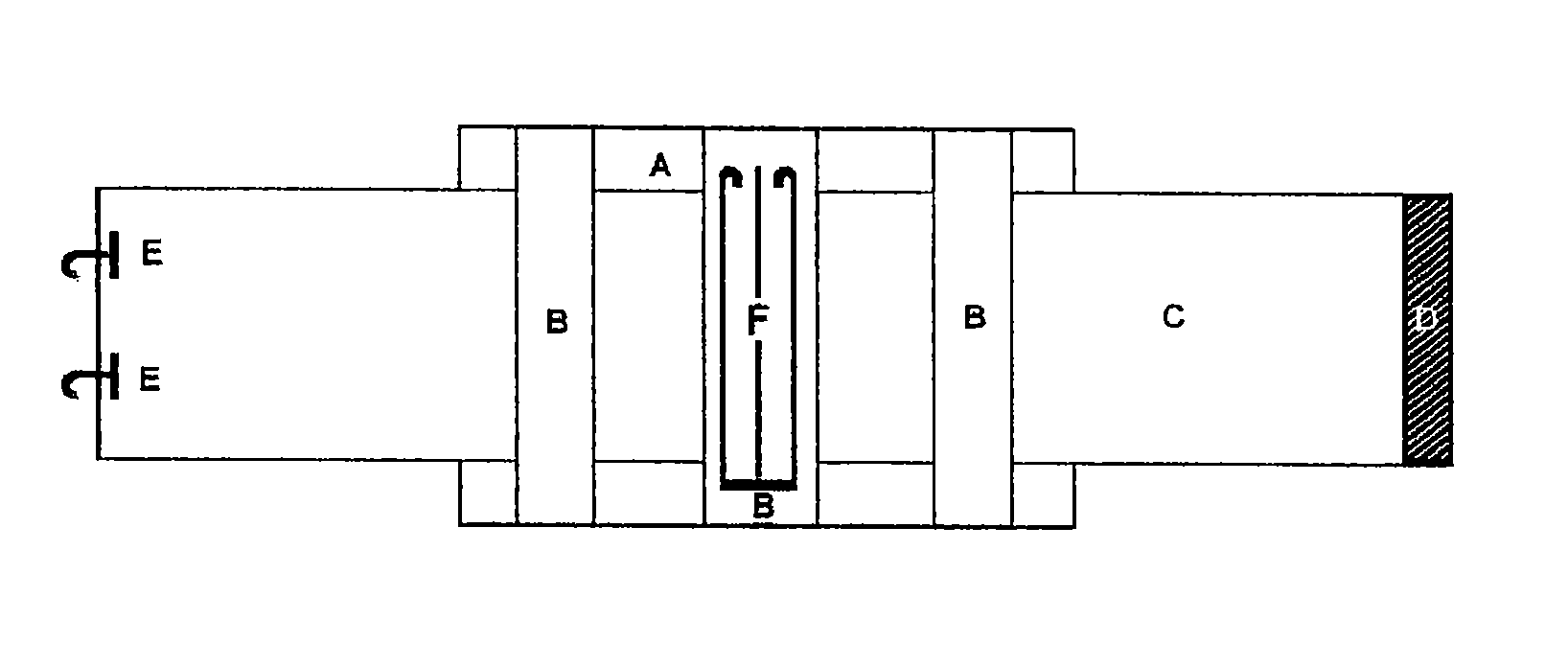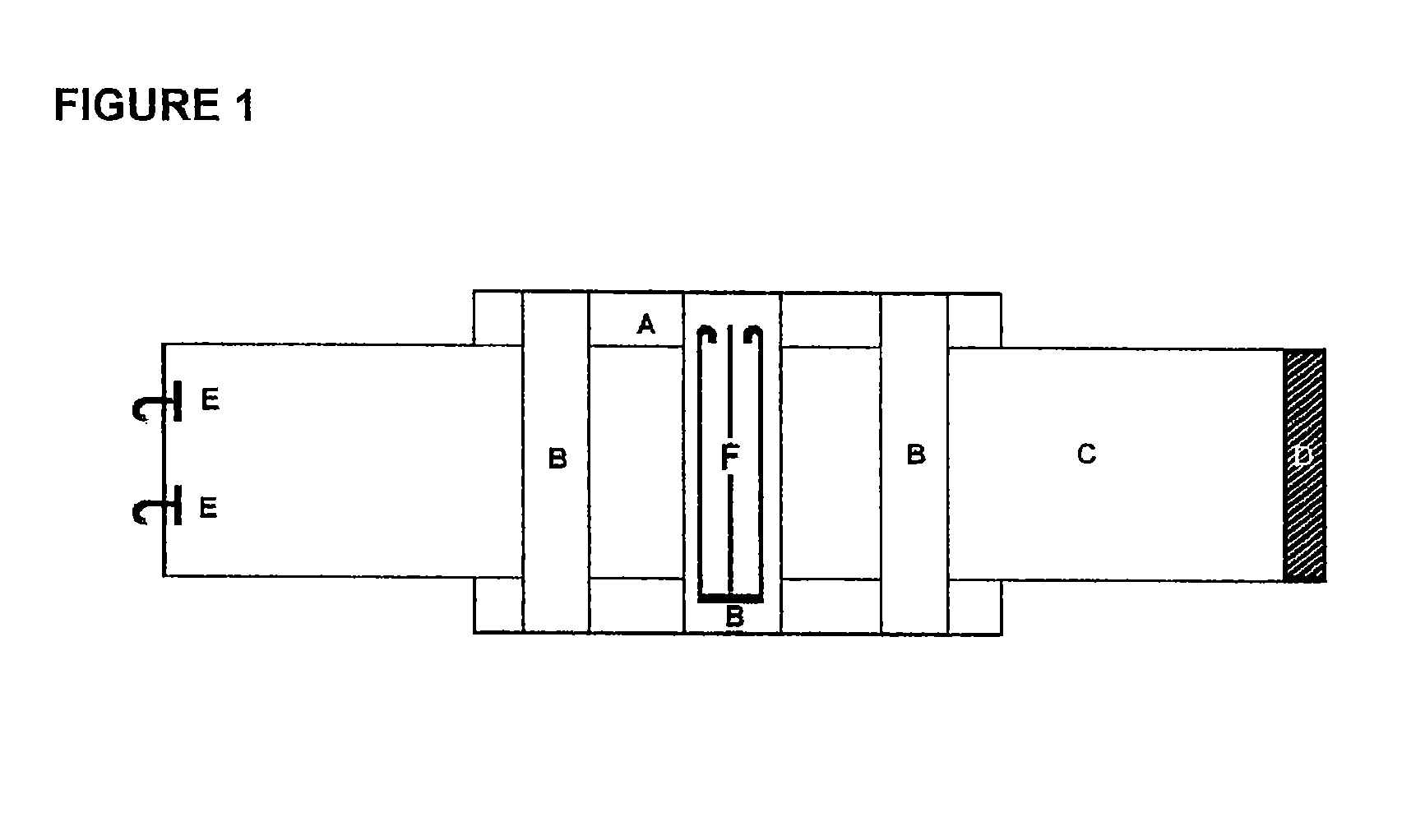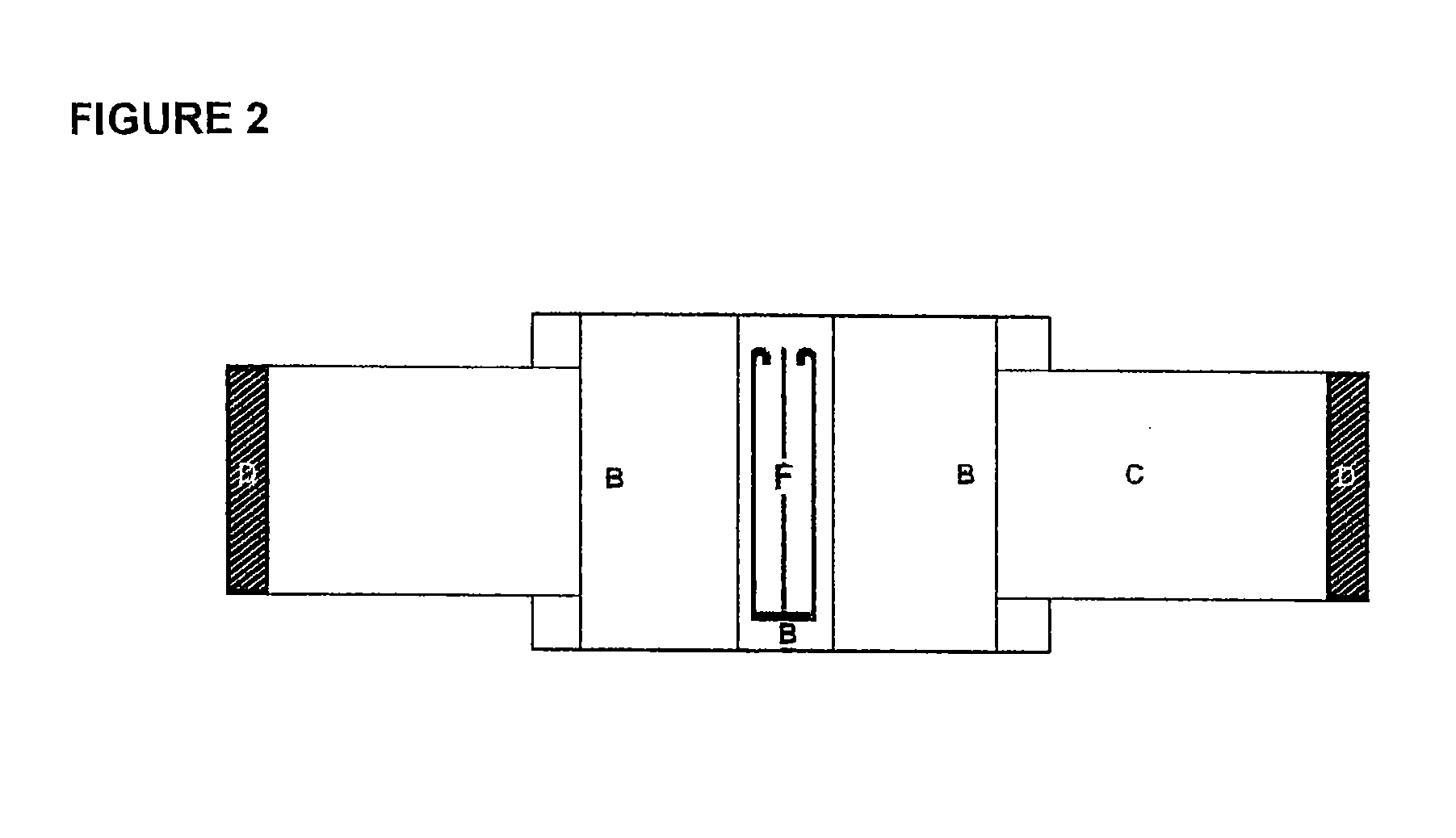Hemostatic textile material
a textile fabric and hemostatic technology, applied in the field of pharmacology, can solve the problems of reducing the degree of compression of the textile fabric, preventing the possibility of obtaining a material capable of strongly and effectively binding other components, and containing fibrinogen and thrombin, so as to facilitate a fast stoppage of bleeding effect, facilitate the adjustment of the degree of compression, and increase the tension of the elastic bandage
- Summary
- Abstract
- Description
- Claims
- Application Information
AI Technical Summary
Benefits of technology
Problems solved by technology
Method used
Image
Examples
example no.1
EXAMPLE NO. 1
[0077]At room temperature, ε-aminocaproic acid (5 g), gelatin (3 g) and lysozyme (0.5 g) are dissolved in distilled water (650 ml). After complete dissolution, dialdehyde cellulose (100 g) with the degree of oxidation of 1.5% in the form of a fabric is immersed in the solution for 1.5 hours and not more than 2 hours. The fabric is then pressed out, and air-dried to a residual humidity of no more than 10%. The treated fabric is then cut into pads, with the amount of layers per pad and the size of the pad being variable to fill a wide range of requirements. For example, a pad of 7.5×5.0 cm made of 4 layers weighs about 1.0 gm. The new proposed material for bleeding stoppage is then sterilized.
example no.2
EXAMPLE NO. 2
[0078]At room temperature, ε-aminocaproic acid (5 g), gelatin (6 g) and lysozyme (0.5 g) are dissolved in distilled water (650 ml). After complete dissolution, dialdehyde cellulose (100 g) in the form of a fabric having the degree of oxidation of 12% is immersed in the above solution for 1.5 hours and not more than 2 hours. The fabric is pressed out, and air-dried to a residual humidity of no more than 10%. The treated fabric is then cut into pads, with the amount of layers per pad and the size of the pad being variable to fill a wide range of requirements. The new proposed material for bleeding stoppage is then sterilized.
example no.3
EXAMPLE NO. 3
[0079]At room temperature, ε-aminocaproic acid (5 g), gelatin (3 g) and chlorhexidine hydrochloride (0.5 g,) are dissolved in distilled water (650 ml) (formed from 16.25 ml of chlorhexidine gluconate sol. at 20% added to 633.75 ml water to form a total of 650 ml).
[0080]After a complete dissolution, dialdehyde cellulose (100 g) in the form of a fabric and having the degree of oxidation of 1.5% is immersed in the solution for 1.5 hours and not more than 2 hours at room temperature, pressed out, and air-dried to a residual humidity of no more than 10%. The treated fabric is then cut into pads, with the amount of layers per pad and the size of the pad being variable to fill a wide range of requirements. The new proposed material for bleeding stoppage is then sterilized.
PUM
| Property | Measurement | Unit |
|---|---|---|
| length | aaaaa | aaaaa |
| width | aaaaa | aaaaa |
| time | aaaaa | aaaaa |
Abstract
Description
Claims
Application Information
 Login to View More
Login to View More - R&D
- Intellectual Property
- Life Sciences
- Materials
- Tech Scout
- Unparalleled Data Quality
- Higher Quality Content
- 60% Fewer Hallucinations
Browse by: Latest US Patents, China's latest patents, Technical Efficacy Thesaurus, Application Domain, Technology Topic, Popular Technical Reports.
© 2025 PatSnap. All rights reserved.Legal|Privacy policy|Modern Slavery Act Transparency Statement|Sitemap|About US| Contact US: help@patsnap.com



